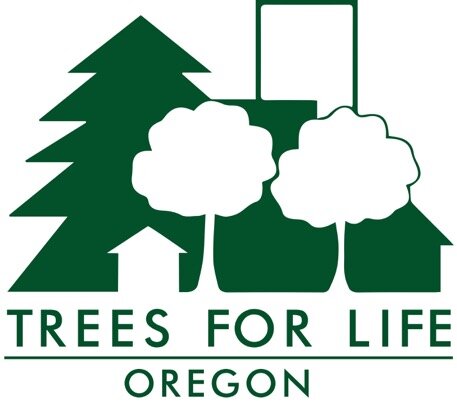Planting for Climate Change
By Jim Gersbach
Not until the first hot afternoon of summer do most of us appreciate the gift of having a large tree in our yard. As the sun beats down, we scoot our lawn furniture into the leafy shade. Our homes are more livable when surrounded by carefully chosen and placed shade trees.
Compared to the last three decades of the 20th century, average temperatures are forecast to heat up by 2 to 8.5 degrees by the years 2041 to 2070, warns the Oregon Climate Change Resource Institute. Unless global greenhouse gas emissions start dropping soon, expect more merciless heat waves and heat-related deaths.
Portland’s densification, designed in part to accommodate the half-a-million new residents expected by 2040, is worsening the city’s urban-heat-island effect. Trees help reduce this effect. Shaded streets are several degrees cooler than sun-exposed areas. And trees release lots of cooling water vapor into the air. The cooling effect is most pronounced in areas rich in big shade trees--think parks like Laurelhurst and older residential neighborhoods like Eastmoreland.
But with skyrocketing land values in Portland, space for large old trees is too often neglected. Tree-filled, walkable neighborhoods are irresistible to buyers, prompting developers to buy up smaller homes on big lots. The lot usually gets divided and the cramped old house is demolished to make way for two or more new homes. The demise of single-family residential zoning also opens the door to even more housing units on those same lots.
Big shade trees are often collateral damage from densification. But they can also be lost when people make room for a more spacious kitchen, a home office, or an auxiliary dwelling unit. Even if trees are spared during development, they may still be felled by new homeowners eager for a sunny patch to plant tomatoes.
Replacement trees are invariably under 30 feet tall, too small to cast enough shade to cool a whole yard. The result is the disappearance of the cool-air reservoir that was created by adjoining yards with big trees.
There are some bright spots. Plantings of new trees in street right of ways appear to be outpacing street tree removals, though most are small- or medium-size species. Public and private partnerships have helped fill highway margins like those along Interstate 205 in east Portland with substantial numbers of new trees. Once barren school grounds, some asphalted over to cut down on upkeep, are green again with new trees.
Key to the movements success has been a commitment to water trees for at least two summers after planting. With warmer summers in our future, the nonprofit Friends of Trees believes watering should be extended to at least three years or five, depending on the species.
The same climate change that makes trees more critical to our health and comfort will also increase risks to those same trees. More frequent and prolonged droughts will make it harder to establish trees without adequate watering, winds may be more frequent and forceful, and rainfall in winter may increase. Milder winters will allow more tree pests and diseases to survive and expand their range.
Homeowners choosing trees should consider trees that are:
Good shaders. Columnar trees or those shaped like a pyramid such as many conifers offer less shade than broader trees that spread their limbs wide--such as natural forms of beeches, chestnuts, and many oaks.
Resilient and functional.
Not prone to fatal diseases and pests. For instance, birch is no longer a good choice because of the bronze birch borer. Persian ironwood, ginkgo, and hornbeam are typically free of serious pests or diseases.
Heat-tolerant and can get by with less water. Oaks from southern Oregon, California, and the Southwest fit the bill. Some are even evergreen, helping reduce winter runoff.
If a narrower tree is necessary because of limited yard space, consider tall forms. ‘Dawyck Purple” and ‘Red Obelisk’ are columnar forms of European beech that can reach 45 to 60 feet but spread no more than about 15 to 20 feet at maturity.
